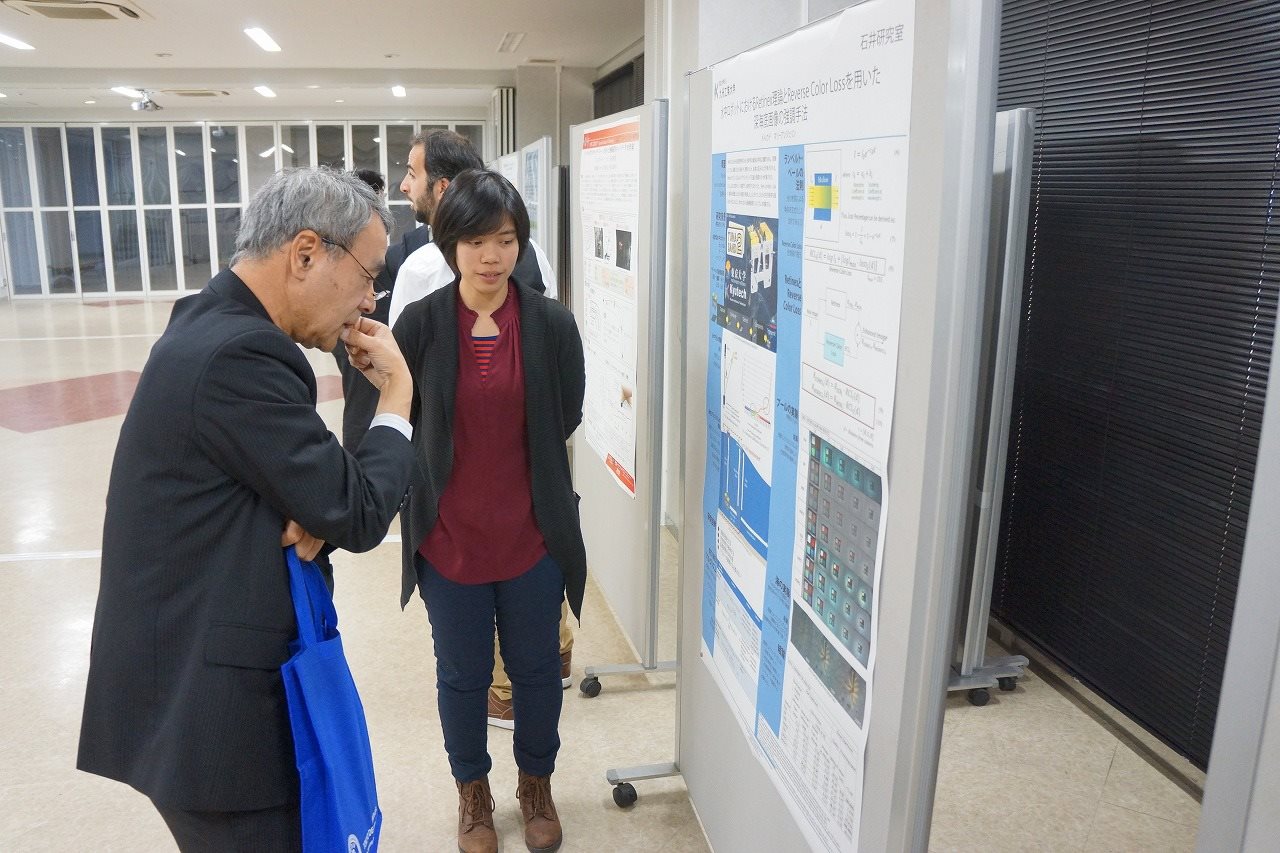Article
Doing the Robot
 January 12, 2019
January 12, 2019
Regardless of the generation one grew up in, there is a big chance that—at one point or another—one has been enamored by robots. After all, pop culture throws us a lovable robot every few years, whether it’s R2D2 and C3P0 from Star Wars, Voltes V, Johnny 5 from Short Circuit, the Terminator, all of the Transformers, or even Pixar’s Wall-E. There is inherent drama in robots—machines that are always threatening to approach sentience. The storytellers of the human race can never stop telling weaving narratives in which robots question their existence or change the world.
When we were children, many of our classmates would answer “robot pilot” or “scientist” enthusiastically when asked about their dreams for the future. The prospect of discovering new things and changing the world was too cinema-like; it was irresistible.
These days, robots are actually everywhere. But they haven’t been saving us from big bad alien invaders, although that would be nice, if the time comes. They’re fighting a different fight—helping their boring human masters cope with the tedious task of surviving and thriving on this Earth. Some robots were made to literally do jobs that humans can’t.
Very few people can claim to have actualized this dream of being a robot scientist here in the Philippines. The lack of institutional support for the field serves as a formidable barrier for many aspirants. However, those with unrelenting drive and dedication seem to find ways, and there is no better example of such a person than Angelyn Mercado.
The Storm that Started it all
Angelyn’s interest in computer programming and robotics were sparked during her high school years when she was part of a robotics club that tinkered with Lego Mindstorms™. [Mindstorms™ is a hybrid of the Technic™ line where each package has its Lego mechanical parts with an intelligent brick computer that controls the system and a set of modular sensors and motors. It’s more like the Lego building blocks as hardware but with features of program development of robots.] She wanted to find out how to affect the physical world with programming and discovered that robotics could bridge this divide.
Her father works in logistics, and her mother runs their clothing business, so they found programming and robotics a surprisingly unusual career path to take for a girl.
"My family's occupations are so different from one another," she says.
Being the youngest amongst six siblings, she considers her field to be the child of the professions practiced by her two brothers: one who works as a scientist, and one who works in I.T.
Mercado opted to take a degree in Computer Science from the University of the Philippines. Given the choice between taking up Mechatronics—the combination of mechanical engineering and electronics—or Computer Science, she said that she "really preferred to take up Computer Science first, since it's the brains behind robotics."
In 2009, the year of Angelyn's 20th birthday, she experienced a storm that would change her life — Typhoon Ondoy ravaged Metro Manila, and Angelyn’s family home was not spared. She and her family were trapped on the second floor as the water continued to rise. Luckily, they were eventually rescued. However, hundreds of other Filipinos died under the rain and floods during the onslaught of Ondoy. Mercado says: "So I was thinking: What could have we done to prevent this?”
At the back of her mind, clogged drainages partially caused the massive flooding. Her simple thought back then is that perhaps small robots could help monitor and even clean drainages regularly. Maybe that would minimize the flooding. Maybe, underwater robots could even expand the reach of search-and-rescue operations. She knew there were so much more to learn and explore, but then institutions and available technologies here in the country are not yet ready.
After graduating and working for a couple of years in a private company, she was able to secure a full scholarship to a school of her choice in 2015. She decided to use the scholarship to attend the Kyushu Institute of Technology in Fukouka, Japan, which was offering a robotics program. Although the classes were conducted in Japanese, Angelyn persevered. She learned the language, finished her course, and even participated in several robotics competitions.
Instead of pursuing a career in robotics abroad, she decided to come back to the Philippines to share what she learned about her passion. Her goal is challenging but ultimately very simple: to develop robotics here in the Philippines.
The Need for Change
Robots are oftentimes dramatized as futuristic machines that try to behave and work as humans do. But in reality, robots are already highly utilized in less glamorous ways to help a lot of different industries. While many of us fear an eventual robot uprising that will take the human race captive, just like the Matrix, they present a very immediate and realistic threat these days—job loss.
When asked why she thinks that Filipinos aren’t too interested in robotics, Mercado says: “It’s kind of political. First of all, we’re not really that technologically advanced right now.
Second, the application of robotics will clash with our labor force.”
Robotics and Artificial Intelligence have yet to reach peak levels in the Philippines. For Angelyn, preparedness and education are key to instituting a healthy and lossless national paradigm shift.
“I think people need to keep an open mind because there are so many things going on right now, specifically in technology. I think if robotics and A.I. were introduced to the masses, they would panic because of fear that they will lose their jobs. I would hope that they keep an open mind. While technology evolves, we need to evolve beyond it,” she says.
“The broadening of people’s awareness, combined with a shift in education, both on level and and availability , will help us develop as a country. It will enrich the lives of more people, but a strong institutional support to facilitate this change is imperative. We need to know right now where we are, and what we want to be in the future.” Evidently, robots that increase efficiency and perform tasks and jobs we humans really can’t physically do will greatly contribute paving the way for a more advanced Philippines and us focusing on more essential ‘human” facets.
Instilling Non-artificial Intelligence
When asked about where she thinks the Philippines is right now in terms of robotics, Mercado talks about the work still to be done.
"I do know that they offer robotics in the Science, Technology, Engineering, and Mathematics (STEM) track curriculum for our K-12. I was pleasantly surprised when I returned here learning that high schools have robotics already. However, robotics in the STEM track in the Philippines is still very limited. For instance, they still use Lego Mindstorms here whereas in other countries, like the United States, they have different forms of robotic kits. They have kits for underwater robotics and even aerial robotics.”
While the Philippines is in the process of developing their robotics further, she encourages Filipinos who are interested in the field to take courses that can serve as foundations for a career in robotics, such as Computer Science, Mechanical Engineering, and Mechatronics. They can then travel abroad.
She lamented how many Filipinos who have specific interests in research go and stay in other countries because that's where the knowledge is right now and likewise, we still import essential facilities and machines needed to manufacture the materials needed for decent robotics.
"I want as many people studying outside [the country] to come back here. Sure, go ahead and study outside, but give back. Come back and stay even for a couple of years," she says. For research, for scientists, it's really hard here. There are limited resource, perhaps it may not be the priority of the government, but it’s really quite unfortunate since there are [actually] a lot of test sites here in the Philippines as there opportunities, especially for underwater robotics.”
"We may conduct research here but how can we use it when we're still trying to solve the poverty problem?" While Filipinos may still need to look beyond their own shores to advance their robotics careers, Angelyn has some solid advice for aspirants: Make the most of it.
"I want every Filipino to experience and try to live outside because we have to know that we're not just limited to our borders. There are so many opportunities outside we can bring in here that will make us progress even faster. There are so many ideas you can apply here… like underwater robotics."
Angelyn likes to explore different cultures and robotics practices around the world, which is why she’s considering taking her PHD in Europe instead of Japan.
“The eastern perspective is completely different from western perspectives,” she says. “Take for instance Japan—their population is in an inverted pyramid. So their target there is how to aid the elderly, which dictates the focus of their robotics initiatives. In the U.S. military, they have different priorities.”
"Once you try to live outside, I feel that you'll be a global citizen. Your world is no longer focused on the national, and you will realize that all of us are living on one earth.”








